
Sarracenia Purpurea Purpurea Carnivorous Purple Pitcher Plant
Sarracenia purpurea. common pitcher plant. An evergreen, semi-erect, insectivorous perennial to 30cm tall. Squat, green pitchers, to around 15cm long, are flushed and veined purplish-red, have a large lip and an erect, frilled lid. Five-petalled, purple flowers, up to 5cm in diameter, are borne well above the pitchers in spring

Purple pitcher plant Sarracenia purpurea grow and care Travaldo's blog
Zones: 2-7 (2-8) The Northern Purple Pitcher Plant, Sarracenia purpurea purpurea, is low growing with short, stout traps, often showing burgundy color and red veins in full sun. In the winter this carnivorous sarracenia frequently turns a gorgeous deep reddish purple color. The external pitcher surface is waxy and feels hard to the touch.
Purple pitcher plant in bloom (Sarracenia purpurea) [OC 3264x2448] r/BotanicalPorn
Family: Sarraceniaceae. Other common names: Špirlice nachová (Czech), trompet. Deceptive and deadly, the carnivorous purple pitcher plant traps insects in its modified leaves. Often found in nutrient-poor bogs, purple pitchers rely on insects, beetles, and spiders to supplement their diet. Unsuspecting prey, lured by bright colours and sweet.
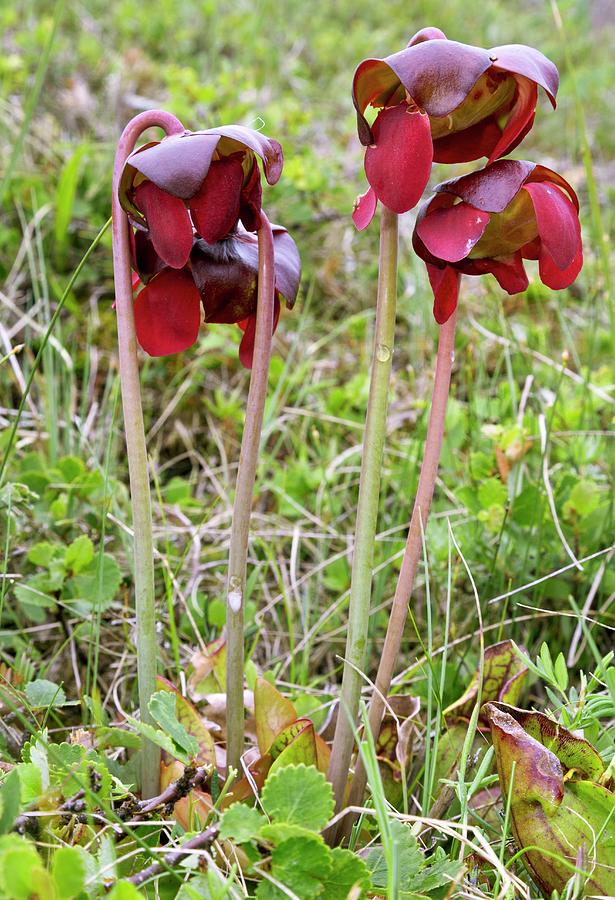
Purple Pitcher Plants (sarracenia Purpurea) In Flower Photograph by Bob Gibbons/science Photo
Flower: A single nodding flower, 1 to 1½ inches in depth and up to 2½ inches wide, forms at the end of long slender stalk. Five broad spreading sepals, tinged with reds and purple, form a waxy, rigid umbrella-like structure over flower. Five bright red, oval petals, incurved at the base over the ovary, hang only briefly before shedding.

Sarracenia purpurea (purple pitcherplant) Go Botany
Sarracenia purpurea purple pitcher plant, common pitcher plant Purple pitcher plant is the only pitcher plant species native to New England; its green and purple leaves (the pitchers) are recumbant, filling with water into which the plant secretes digestive enzymes to digest trapped insects, which supply much-needed nitrogen for a plant adapted.

Sarracenia purpurea var. purpurea (NORTHERN PITCHER PLANT) Special Vegetation
Purple Pitcher Plant (Sarracenia purpurea) Purple pitcher plant, hardy in zones 4-9, features unique upward-opening hoods on its pitchers. The purple pitcher plant is the hardiest type and survives outside in zones four through nine. It produces purple and green pitchers that reach up to 18 inches tall. While most plants in the Sarracenia genus.

Purple Pitcher Plant (Sarracenia purpurea), Living
Purple Pitcher Plant Lighting Requirement. Adequate sunlight is key to proper purple pitcher plant growth, so ensure you provide the potted plant with enough direct sunlight in a day. Exposing your purple pitcher plant to at least 6 to 8 hours of sunlight a day is great for healthy growth. It can also survive shaded or partial sunlight but if.
[OC] Sarracenia purpurea, purple pitcher plant, flowers [6000x4000] r/BotanicalPorn
Binomial name. Sarracenia purpurea. L. Sarracenia purpurea range in the USA and Canada. Beetle Lebia grandis trapped inside pitcher. Sarracenia purpurea, the purple pitcher plant, northern pitcher plant, turtle socks, or side-saddle flower, is a carnivorous plant in the family Sarraceniaceae . Sarracenia purpurea, St-Narcisse, Quebec, Canada.
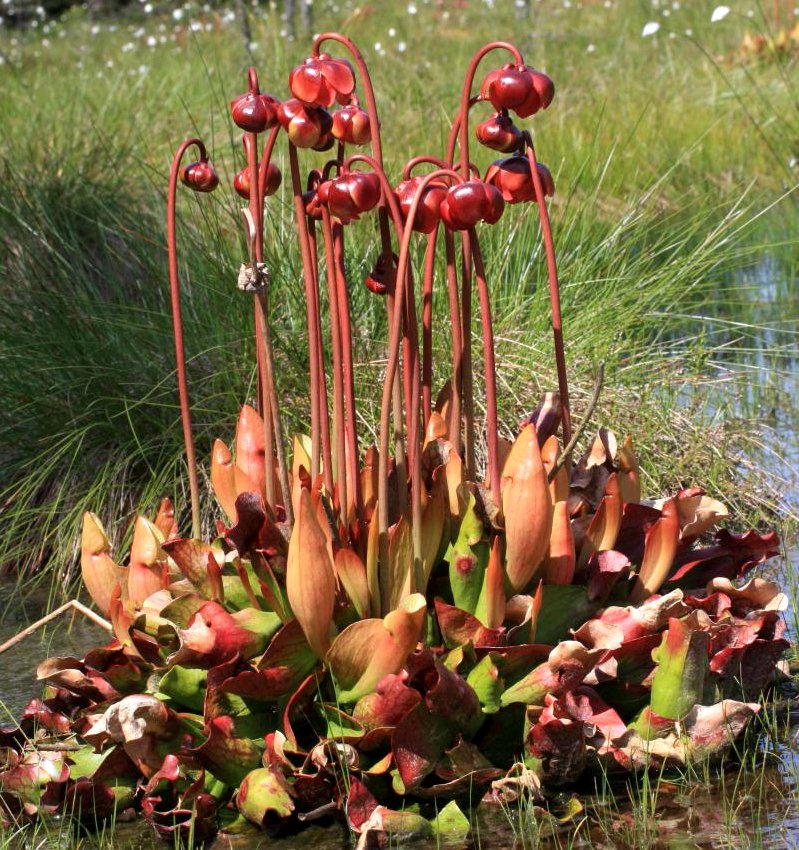
Purple Pitcher Plant Carnivorous Sarracenia purpurea 12 Seeds
Purple Pitcher Plant. Sarracenia purpurea subsp. venosa (Purple Pitcher Plant) is a carnivorous perennial prized for its short, squat, green pitchers, up to 12 in. long (30 cm), heavily flushed, and veined burgundy-purple. Unlike in erect pitcher plants, the lid does not shield the pitcher's opening. It is erect and also richly veined in purple.
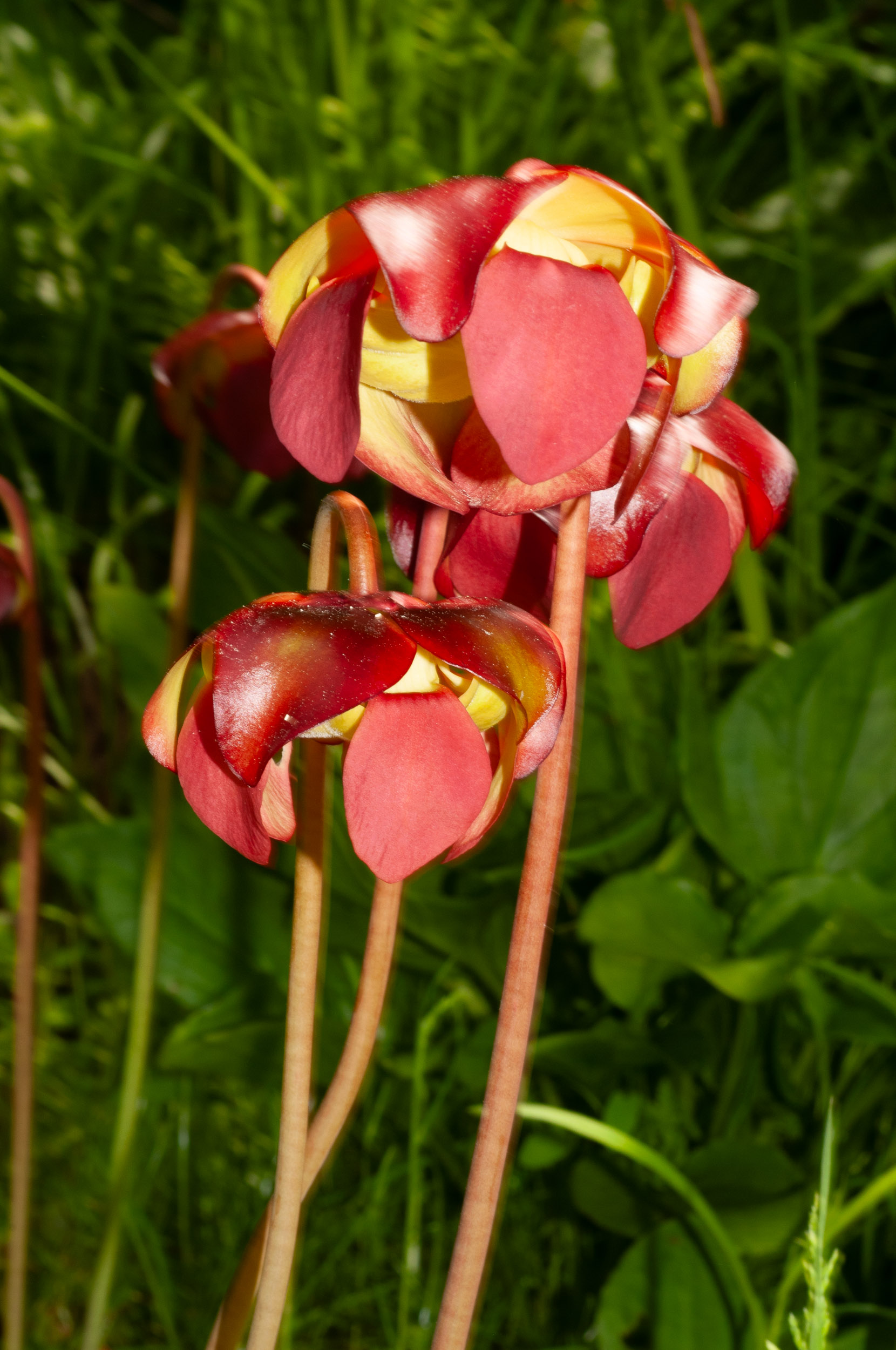
Sarracenia purpurea (Purple pitcher plant)
The botanical name of the Purple Pitcher Plant is Sarracenia purpurea; The Sarracenia purpurea generally grows in swampland. The leaves of the sarracenia purpurea are upright similar to a flower or bucket. The purple pitcher plant is carnivorous. The coloring on the sarracenia purpurea that looks like veins is actually caused by sun exposure.
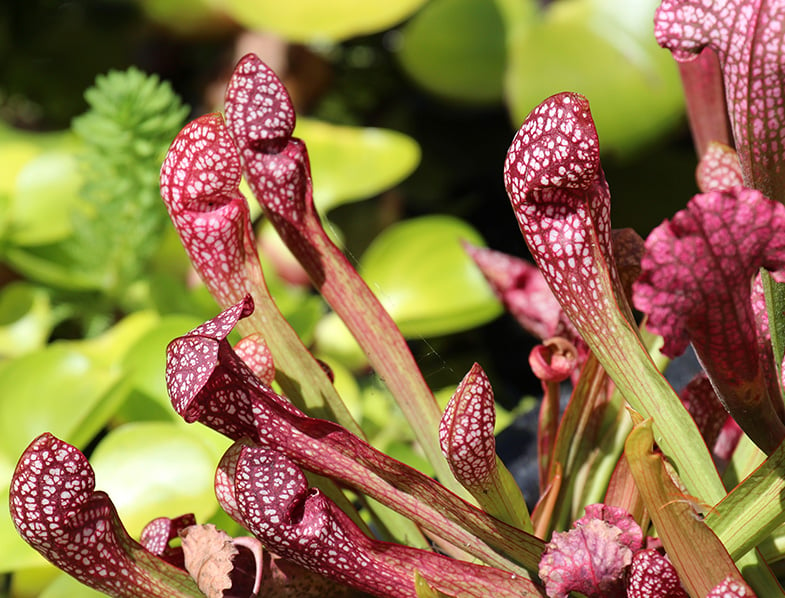
Purple Pitcher Plant Guide How to Grow & Care for “Sarracenia Purpurea”
Extremely cold-hardy, Sarracenia purpurea (Purple Pitcher Plant) is a carnivorous perennial prized for its evergreen, semi-erect, squat, green pitchers, up to 12 in. long (30 cm), flushed and veined burgundy-red. Unlike in erect pitcher plants, the lid does not shield the pitcher opening. It is erect, with a pair of lateral wings on each side.
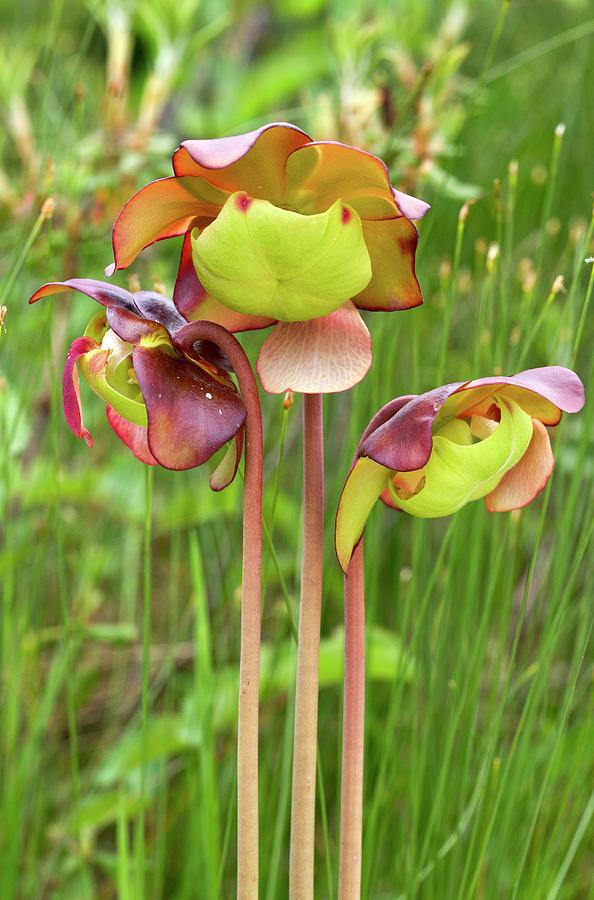
Purple Pitcher Plant (sarracenia Purpurea) Flowers Photograph by Bob Gibbons/science Photo
Pitchers on the northern purpurea pitcher plant are more numerous, narrower, and more densely packed than it's southern counterpart. Flowers are red-purple and bloom midsummer. Sarracenia purpurea ssp. venosa. Found to the south, this subspecies meets its northern sister in New Jersey, continues along the coastal plain to Georgia, and heads.

Sarracenia purpurea, the purple pitcher plant Carnivorous Plant Resource
1. Sarracenia purpurea L. ssp. purpurea N. purple pitcherplant. Sarracenia heterophylla Eat.; S. pupurea L. var. heterophylla (Eat.) Torr. • CT, MA, ME, NH, RI, VT. Peatlands, peaty shores. Two color forms of this species occur in our area. Most plants show red to purple coloration (to a lesser or greater extent) on the leaves and petals and.

Purple pitcher plant Sarracenia purpurea grow and care Travaldo's blog
Sarracenia purpurea is an evergreen Perennial growing to 0.3 m (1ft) by 0.3 m (1ft in) at a medium rate. See above for USDA hardiness. It is hardy to UK zone 3. It is in leaf all year, in flower from April to May. The species is hermaphrodite (has both male and female organs). Suitable for: light (sandy), medium (loamy) and heavy (clay) soils.
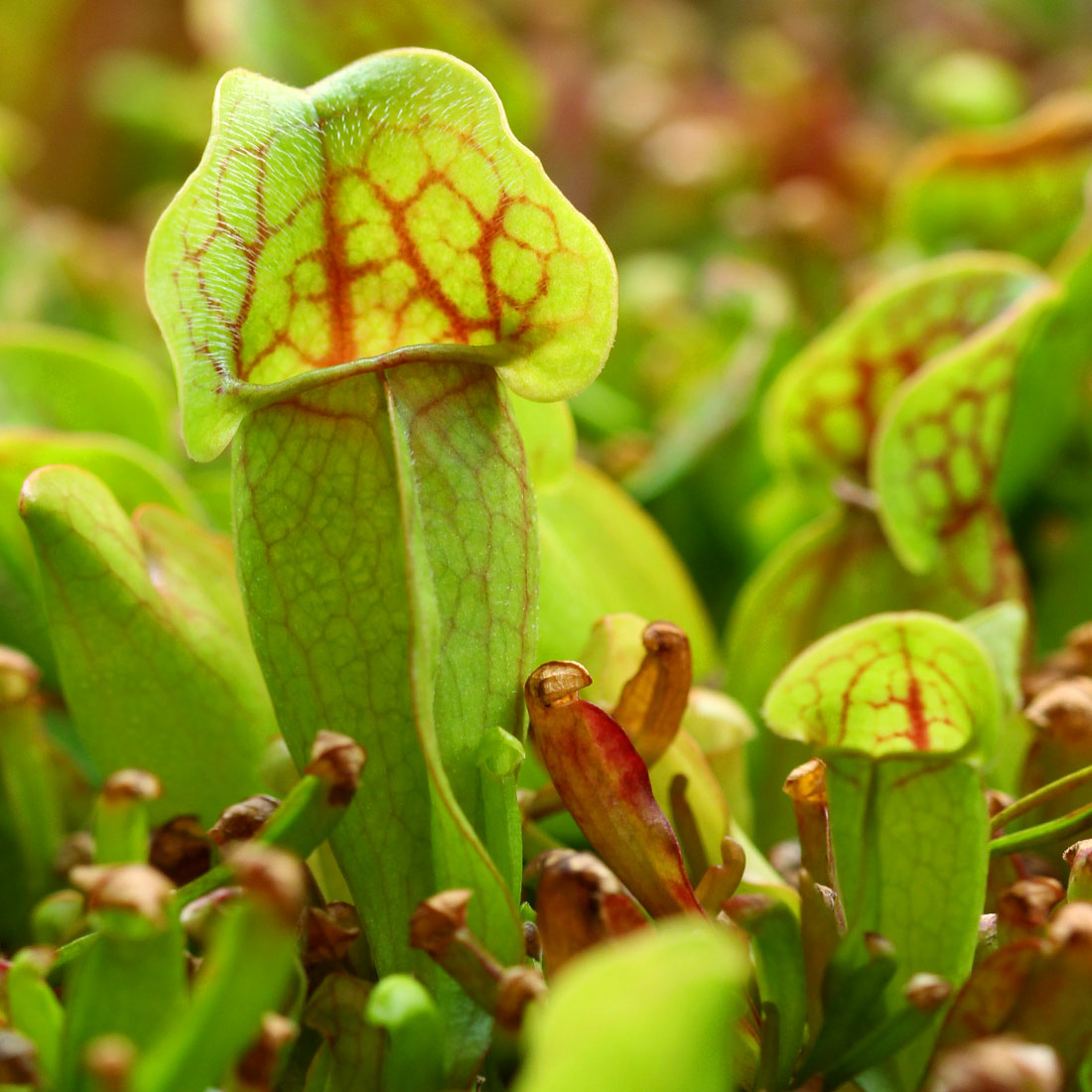
Sarracenia purpurea The Purple Pitcher Plant Curious Plant
The Pitcher Plant ( Sarracenia purpurea) is a carnivorous plant found in peat bogs in the Adirondacks. This habitat is low in essential plant nutrients such as nitrogen, calcium, magnesium, and potassium. Pitcher Plants carry on photosynthesis like other green plants, but supplement their nutrition by capturing and digesting small insects.

Sarracenia Purpurea, Northern Purple Pitcher Plant "Typical" Carnivorous Plant Resource
You can use perlite, horticultural sand and sphagnum peat moss to make the soil for Sarracenia. One type of soil mix is 60% of peat moss and 40% of sand. Another type of suitable soil is 85% peat moss and 15% perlite. If you cannot buy horticultural sand, try getting 'sharp' or washed sand. The sand should be lime and mineral free.